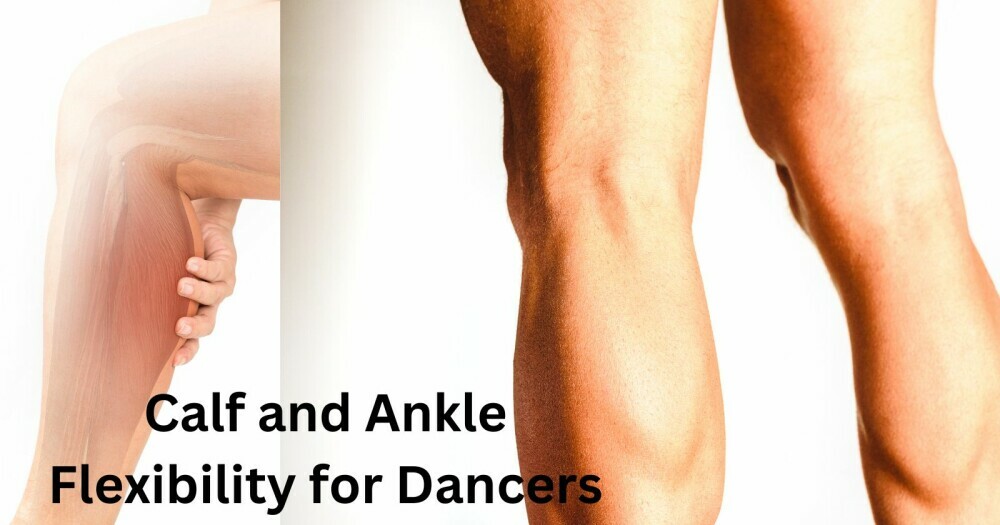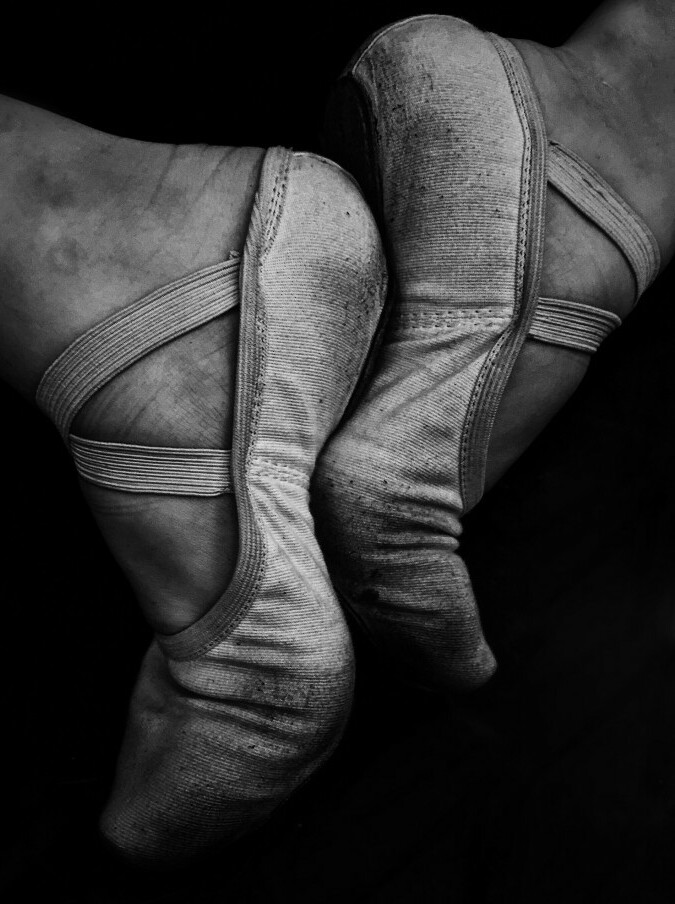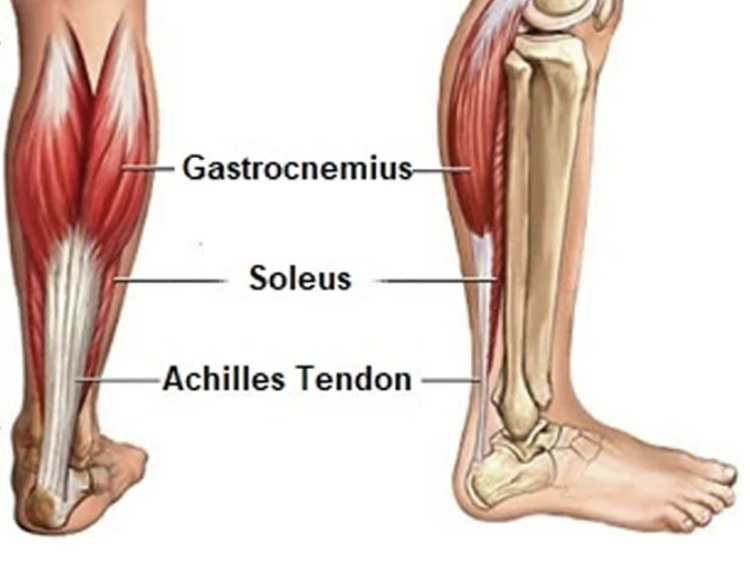Let’s take a look at calf and ankle flexibility exercises, as these can be very important for dancers.
Having strong calves and ankles will help to prevent injury and also make your dancing look stronger and your allegro will improve in leaps and bounds.
If you want to better understand the reason why your ankle flexibility is lacking, it is important to know that there are four muscles that plantar flex the ankle (bring the heel up and push your toes away).
Soleus and Gastrocnemius are the most powerful of these, but the two of them are only one-third of all the muscles that restrict the dorsiflexion or pulling your foot up and pointing your heel.
In this post let’s look at ways to get that calf and ankle flexibility going. And it is not just about doing the same standard calf stretch we see all the time.
Understanding The Muscles For Calf And Ankle Flexibility Exercises
The Soleus and the Gastrocnemius muscles both plantar flex your foot.
In other words, when you go up on your toes, these muscles contract.

The calf is made up of two main muscles:
- The gastrocnemius muscle gives the calf its rounded shape.
- The soleus is the flatter, longer muscle running underneath the gastrocnemius and lower down your leg.
Soleus crosses the ankle, while the Gastrocnemius crosses the ankle and the knee. For that reason, the Gastrocnemius also flexes the knee, and not only plantar flexes the ankle.
In the EasyFlexibility system, different actions of the muscles and different joints that they work on are always taken into account, and thus, stretching techniques look different even for synergetic muscles that do the same thing.
Unfortunately, the flexibility of the lower leg is often overlooked.
Most athletes don’t go much past the standard calve stretches. Dance and ballet schools go deeper and include various foot, ankle, and toe exercises and also the front of the lower leg stretches, which still don’t work or are very slow to produce results for many people.
Even if you are going to do passive standard stretches, if your knee is extended because the Gastrocnemius flexes the knee you will stretch the Gastrocnemius but you are not going to get into the Soleus. To get to the Soleus you have to bend the knee. This is similar to the Psoas and Iliacus muscles. They both do almost the same thing, but they are different, and extra action is required to separate them and stretch them.
There is the standard calf stretch where you stand with your hands against the wall and one leg is behind you and the heel is on the floor. If your leg is straight, most likely you are stretching the Gastrocnemius muscle. If your knee is bent you are aiming at the Soleus muscle.
If you are looking for flexibility in your ankle then these two stretches, if you do them both, won’t be enough to get your ankle flexibility. Because there are six muscles that plantar flex the ankle and not two.
Four Lesser-Known Plantar Flexors
So, besides the Gastrocnemius and Soleus, what are the other four muscles?
Plantaris
There is a muscle called Plantaris.
Plantaris is not commonly mentioned. Not everyone even has that muscle and it is currently believed that the muscle is more about proper receptive awareness than about power. However, if you do have Plantaris (a muscle that not everyone has) and it’s tight, it will prevent you from full dorsiflexion. In other words, from pulling your toes up and pointing your heel. Even if it’s not a power muscle, it could still prevent flexibility.
Tibialis Posterior
The Tibialis posterior is a muscle that also flexes your ankle and can prevent dorsiflexion of your ankle. You’ve probably heard of the Tibialis anterior, which is a muscle in front of your shin. Of course, if you have Tibialis anterior and not just tibialis, it means that there is a posterior tibialis somewhere as well and that tibialis posterior is behind the leg. Opposite of the tibialis anterior, which is in front of your lower leg.

Flexor Hallucis Longus
Now we have the Flexor hallucis longus and flexor digitorum longus. These muscles are unique in that not only do they plantar flex the ankle, but they also work on the toes. Other muscles work on the toes as well, but these two cross both the joints of the toes and the ankle.
Thus, these muscles explain why your toe extension, or your ability to pull your toes up and expose the ball of your foot, changes with the position of your ankle. The same way as your ability to flex or extend your fingers will change with the position of your wrist.
So, regardless of how well-known these muscles are, they are still plantar flexors, together with the other four muscles mentioned above. If they are not flexible they will restrict dorsiflexion or they will pull the toes into an awkward position. And when they are stretched over an ankle joint, they will have to get shorter somewhere else, and that somewhere else will be the toes.
Calf And Ankle Flexibility Exercises
Here are a few of my favorite ankle strength and flexibility exercises to try:
The Broken Toe Pose
Start on the ground on your hands and knees.
Lift your feet and tuck your toes under so that they are pressing down into the mat. This may be enough of a stretch! Hold for 10 seconds, release, then repeat 2 more times.
If you can use more of a stretch, sit back on your heels so that you are resting your weight on the balls of your feet, not the tips of your toes. Place your hands on your thighs and rest your butt on your heels. Try to keep your back straight and look forward.
Downward Facing Dog
Start in a plank position with your shoulders over your wrists. Pull your navel in toward your spine and reach your butt up toward the ceiling.
Form a “V” with your body with your heels reaching down toward the ground. (It’s OK if they are off of the ground.) Pedal your feet one at a time, reaching each of them down toward the ground.
Standing Calf Stretch
Stand in front of a wall and place one foot in front of you with your toes pointed up against the surface of the wall.
Lean forward until you feel a stretch in your calf and foot. Hold for 30 seconds before switching feet.
Balance
This improves foot and ankle mobility.
Stand upright with feet shoulder-width apart. If you need support to maintain stability, stand near a wall or chair so you can hold on for assistance.
Raise one knee to stand on the opposite foot. Balance on one foot for 30 seconds, performing on each side for 2 reps.
Toe And Heel Walks
Try walking first on the balls of your feet, and then walk on your heels lifting the toes off of the floor.
 Try flexing and pointing your toes as often as you can. You can even do it in the water while swimming
Try flexing and pointing your toes as often as you can. You can even do it in the water while swimming
Lunges
Walking lunges and side lunges are also great for the mobility and flexibility of the ankles and calves.
Achilles Stretch
Place your palms on the wall and move one foot back, maintaining a straight knee with the front leg.
Bend the back leg and try to keep both heels flat on the floor. Then, push your hips forward to obtain a good stretching sensation in the calf and ankle. Hold this position for 30 seconds, then switch sides and repeat. Perform 3 reps on side.
Bending and stretching that back knee is also a great way to work on the mobility of the calf and ankle.
Try out the EasyFlexibility Program and see how these exercises can take your dancing to new heights.


Hey a great post you have here!
This post is really useful and important especially for those who want to pursue dancing where a lot of flexibility is required.
I admire how you mentioned how to identify the stretching of the 2 muscles; Gastrocnemius muscle and the soleus! As well as the various forms of stretching and how to do them.
Thanks again for creating such a detailed post on flexibility and muscles!
Have a great day!
Thanks for your comment Sariya. Glad you enjoyed the article.
You reminded me of the days when I used to do Chi Gong.. This art concentrates a lot on the legs in general. I totally understand that the concentration here is for dancers, but what drove my attention is that I remembered how my whole body was light when I used to Chi Gong with that concentration on the lower body.
There was one exercise that my first instructor insisted that we keep on doing whenever we had the chance. While standing find a place to hold on to to keep your balance and stand on your feet while trying to raise your feet as much as possible for the longest time possible.
I miss that art a lot and your article reminded me of how I felt when I was practicing it.
Thank you for sharing that. I must admit that this is the first time I have read about Chi Gong. I will investigate it further.